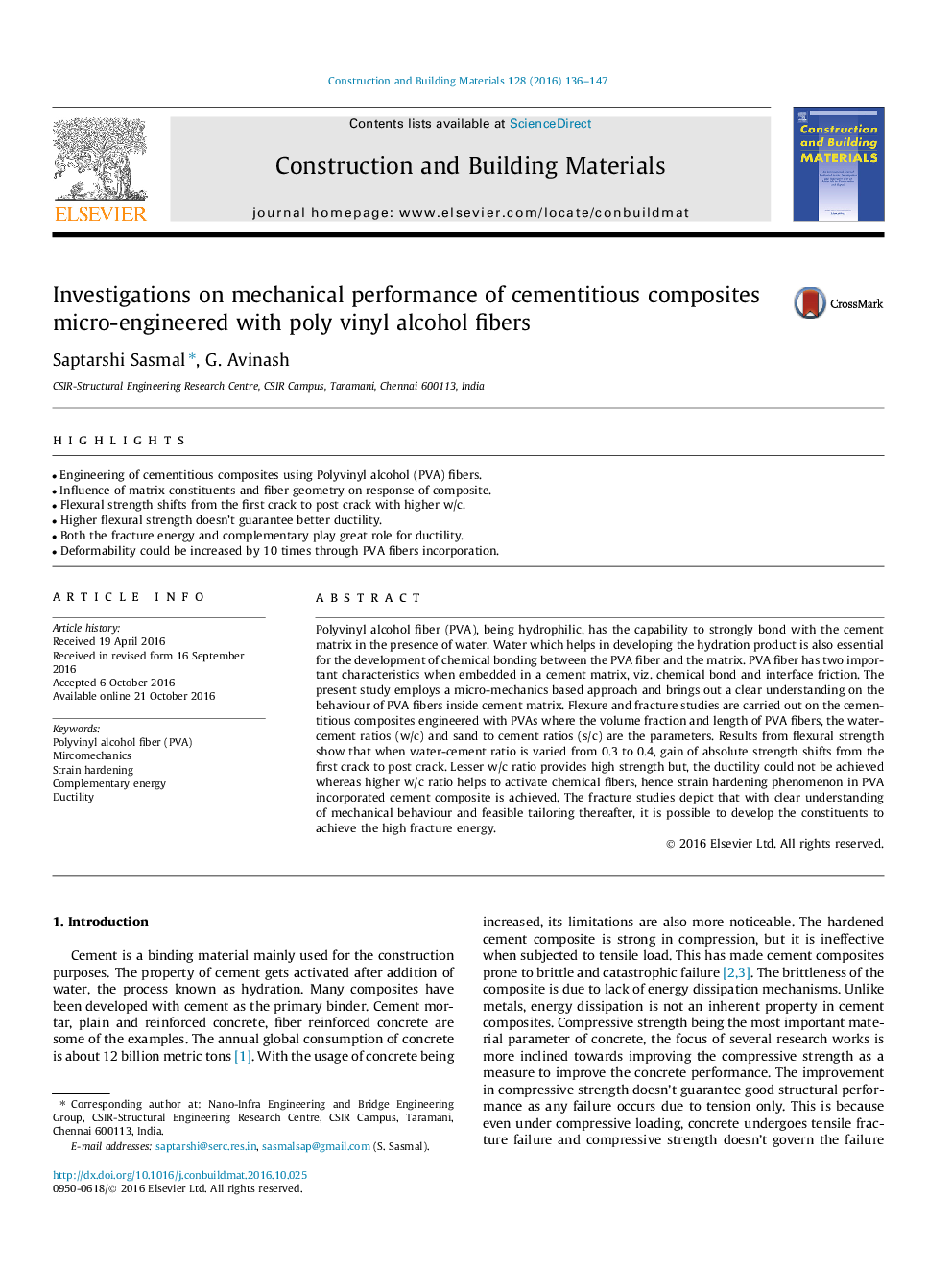| Article ID | Journal | Published Year | Pages | File Type |
|---|---|---|---|---|
| 4914029 | Construction and Building Materials | 2016 | 12 Pages |
Abstract
Polyvinyl alcohol fiber (PVA), being hydrophilic, has the capability to strongly bond with the cement matrix in the presence of water. Water which helps in developing the hydration product is also essential for the development of chemical bonding between the PVA fiber and the matrix. PVA fiber has two important characteristics when embedded in a cement matrix, viz. chemical bond and interface friction. The present study employs a micro-mechanics based approach and brings out a clear understanding on the behaviour of PVA fibers inside cement matrix. Flexure and fracture studies are carried out on the cementitious composites engineered with PVAs where the volume fraction and length of PVA fibers, the water-cement ratios (w/c) and sand to cement ratios (s/c) are the parameters. Results from flexural strength show that when water-cement ratio is varied from 0.3 to 0.4, gain of absolute strength shifts from the first crack to post crack. Lesser w/c ratio provides high strength but, the ductility could not be achieved whereas higher w/c ratio helps to activate chemical fibers, hence strain hardening phenomenon in PVA incorporated cement composite is achieved. The fracture studies depict that with clear understanding of mechanical behaviour and feasible tailoring thereafter, it is possible to develop the constituents to achieve the high fracture energy.
Related Topics
Physical Sciences and Engineering
Engineering
Civil and Structural Engineering
Authors
Saptarshi Sasmal, G. Avinash,
